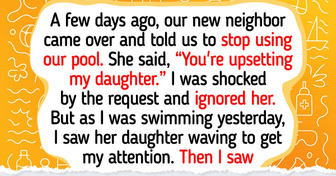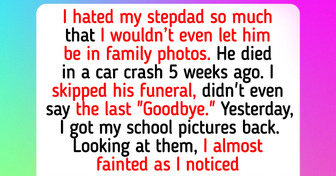12 Family Secrets That Could Rival Any Hollywood Storyline

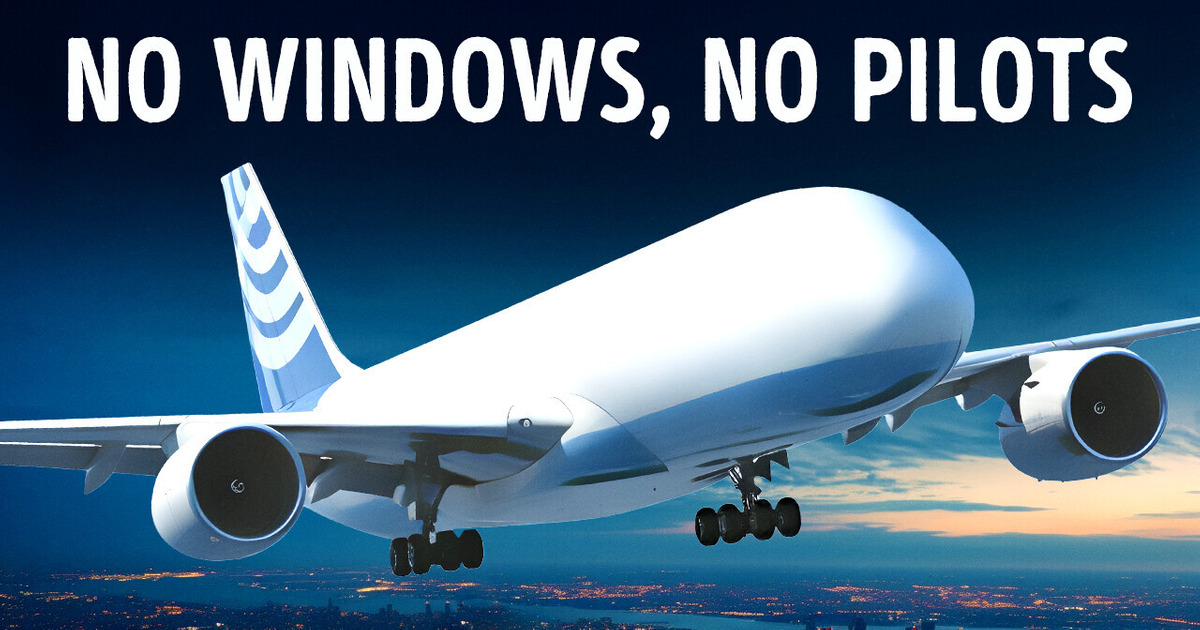
Wanna catch a glimpse of what flying might look like in the future? Then you’re in the right place! Economy class lie-flat bunk beds, vertical flying vehicles, AI-powered in-flight meal service — buckle up, and let’s start our flight!
But first, I need to ask you: have you ever heard of the Crystal Cabin Awards? Oh, those are like the “Oscars” of aviation interior design! And here are some of the most recent winners. Meet “Skynest” — a lie-flat bed for people traveling in economy class.
These “nests” are supposed to be used on long-haul flights. The design is based on a sleep pod island located in the middle of the plane. And you can book a four-hour time slot if you want to take a real nap during your flight. The best news is that this design is likely to be introduced next year!
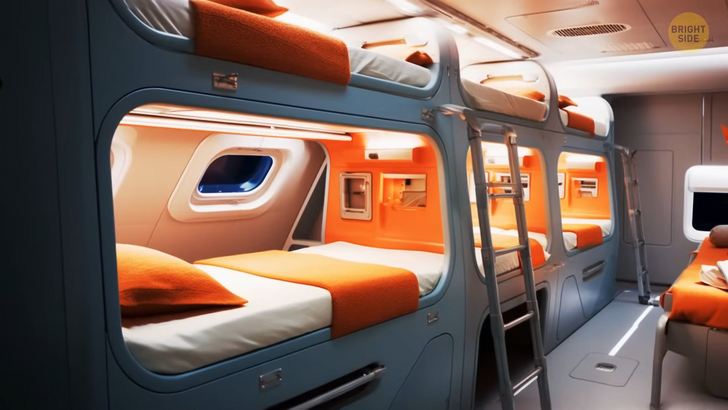
While traveling in premium economy on long routes, you’ll be able to use “smarter seating design.” It includes wider seats and twin armrests — which means no more fighting for space with your neighbors! Plus, there will be fully flexible rows with cushions that can be elevated, creating lie-flat beds. Lufthansa Group has promised that premium passengers will be able to book suites with double beds and travel on temperature-controllable heated or cooled seats.
As you see, these days, airline companies are working hard on new designs of aircraft cabins — and it might impact the entire future of air travel. At the moment, they focus on travelers’ experience within the walls of the plane. As a result, we have some mind-boggling products: Singapore Airlines’ first-class suites or Air France’s “La Premiere” cabin, which is believed to become one of the best first-class cabins in the skies. It’s going to feature suites equipped with separate sofas and chairs, and each suite will have five windows along the cabin wall. This will make it the longest first-class suite in the world.
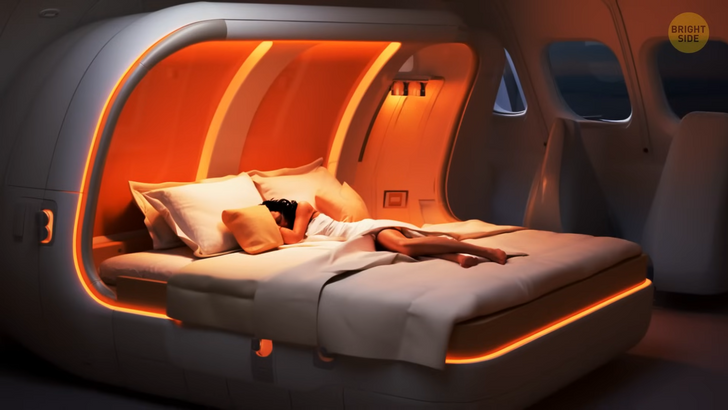
But then, Airbus went and patented the idea of a more interactive flight experience — especially for those lucky passengers occupying window seats. With the help of special eye-tracking equipment, the aircraft might be able to highlight significant objects you’re looking at and provide you with detailed information, appearing on a semi-transparent display on the window. The patent also claims that you could send data to devices connected by Bluetooth or Wi-Fi. This way, takeoffs and landings would get much more exciting, and you’d be able to get information about a new country or city.
Qatar Airlines, in turn, came up with the idea of Qsuites. It looks like this: on the sides, you have individual suites, while the middle part can be transformed. You can choose to have a double suite to travel together with your partner, or you can have some private space, or even move the walls and turn the place into a quad suite you can use for a meeting.
There might also be some improvements in the economy class. They’re bound to bring more comfort, especially on a long-haul flight. A company called “Zodiac Seats” filed a patent based on a zigzag configuration of seats. Look at this aisle, which contains 3 and 4 seats, with each of them facing in the opposite direction. This allows for way more shoulder space than regular seating. Plus, passengers have a lot of leg space. Yes, some people might feel a bit uncomfortable having to face their neighbor for more than 8 hours straight, but aren’t these space improvements worth it?
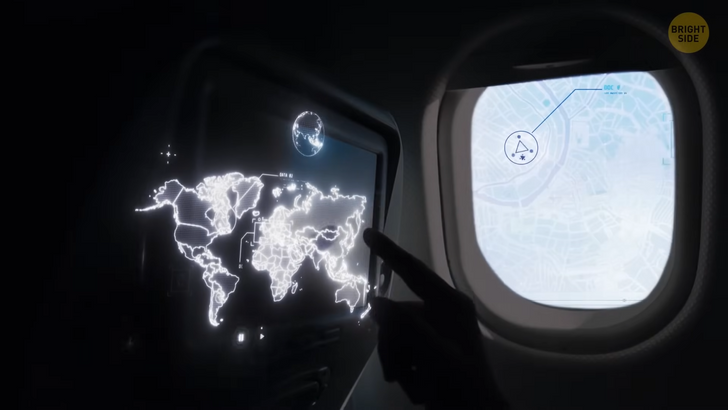
Now, you might know that moving around the cabin while flight attendants are serving meals and beverages is kinda tricky. Plus, you have to eat at a specific time with everyone else — or, if you are not feeling hungry, forgo the meal altogether. Well, robots might be the solution!
One company has suggested using perfectly sized pods that could slide along the rail in the middle of the aisle, delivering drinks and food ordered by passengers. This way, you could get your meal at the most suitable time for you without leaving your seat! This solution is likely to solve the problems with meal service. Even better, it might allow for fewer galleys in large planes. Unfortunately, this idea was filed 60 years ago and hasn’t been implemented yet. So, maybe it’s not as great as it sounds.
Another idea connected with in-flight meal service includes using AI. According to its creators, the technology will record what passengers leave on their trays and later use this data to suggest various catering plans on subsequent flights.
Now, even though these innovations sound like they’re going to make traveling way more comfortable, they’re not exactly revolutionary. But look at these innovations! Vertical takeoff and landing aircraft! Hyundai Transys’s air taxi cabin concept optimizes space and prioritizes your privacy in a shared cabin.
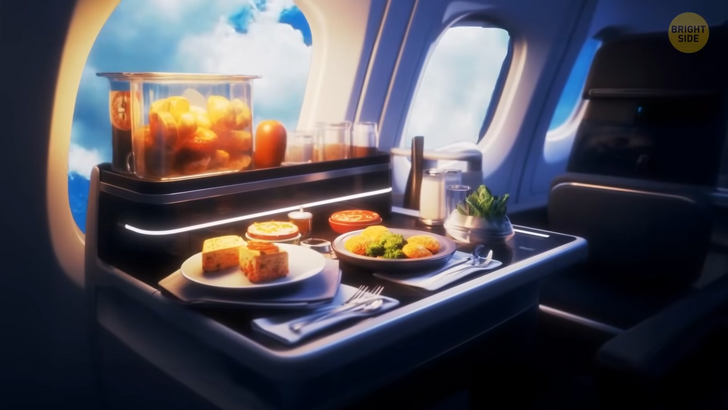
If we talk about short flights, there’s CityAirbus NextGen. That’s an all-electric, vertical takeoff and landing vehicle with four seats based on the “lift-and-cruise” concept. It can operate within the range of 50 miles and has a cruise speed of 74 miles per hour.
Another amazing prospect is passenger aircraft with AI co-pilots — or even pilots! Some experts claim that planes could potentially be flown on a fully automated basis. Not everyone agrees with this idea, though. A skilled pilot is part of a complicated safety system that reduces risks and keeps passengers safe.
Pilots have to be navigators, technicians, engineers, and weather experts. On a regular working day, a pilot needs to deal with ground crew, other aircrew, cabin crew, air traffic control, and passengers. That’s a lot. And don’t forget that they need to communicate well not only in aviation terms but also on an interpersonal level. Will AI be able to do the same? Time will tell.
But let’s get back to the boldest ideas about the future of air travel. Some experts think that sometime around 2040, you’ll be able to catch a hypersonic plane ride! Lots of people believe that the era of supersonic planes finished in 2003 when the Concorde commercial airplane was decommissioned after decades of being unprofitable. But it seems the situation might change soon! New supersonic aircraft will fly at incredible heights, and their speed is likely to be at least 6 times the speed of any other passenger plane.
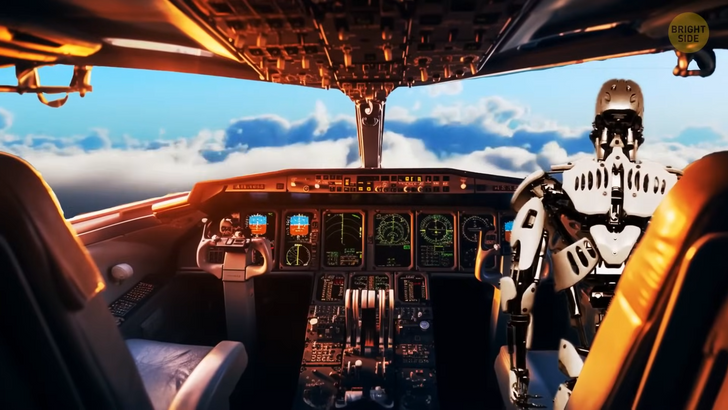
Traveling from New York to London, in this case, will take less than two hours. By comparison, these days, it takes a conventional airplane 8 hours to fly from one of these cities to the other. There is one problem, though.
The supersonic plane tickets will cost a lot. And statistically, people tend to prioritize price over speed. So, experts don’t think that a lot of people will be eager to pay a few thousand dollars to get from London to Sydney in four hours. Plus, such planes will need a lot of liquid hydrogen fuel — and at the moment, it’s not cheap.
By the way, you might not recognize a plane from 2050. These flying machines will keep changing for the next several decades. And the chances are high that, at some moment, windows will start to disappear from airplanes altogether. This way, aircraft will become stronger and better suited for high speeds.
Windows make planes heavier, which results in larger fuel consumption. No wonder cargo planes don’t have windows! Planes will also become sleeker and will likely be covered with solar panels. There’s also a concept of a plane with its cabin made out of transparent polymers. I don’t know about you, but I would never ever board such a plane. Talk about aerophobia!
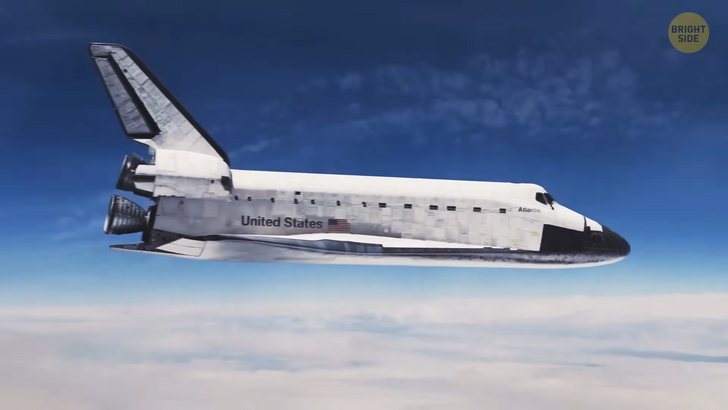
The chances are that in a few decades, we will see a hypersonic plane with a jet engine that can turn into a rocket that can fly into space. Liquid oxygen would get injected into the exhaust, turning the engine into a rocket. It would help the aircraft reach enormous speeds. And on the way back, the engine would turn into a regular jet engine once again.





